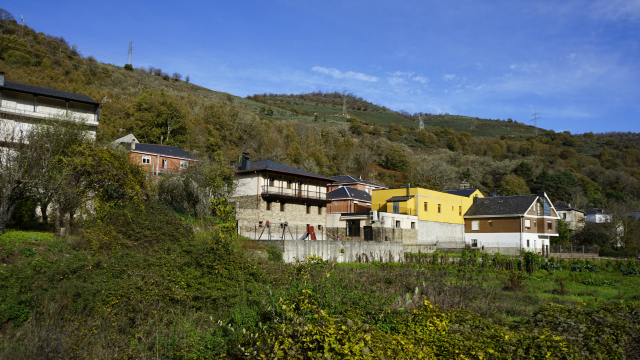Trabadelo

The first human settlements in the area date back to Roman times, as evidenced by the remnants of an ancient wall in Parada de Soto and the Los Cáscaros mining site in Pradela. This open-pit mine was used by the Romans in their attempt to extract gold through a system of channels, which are still visible today.
In the Middle Ages, Trabadelo was part of the Kingdom of León and underwent repopulation efforts, falling under León's jurisdiction. In the modern era, the village became part of the province of Villafranca in 1821. However, when Villafranca lost its provincial status in 1833, Trabadelo was permanently incorporated into the province of León.
Today, agriculture and livestock farming continue to be the primary economic activities, with the region known for its production of apples (*reineta*), pears, *botillo* (a traditional cured meat), and *cecina* (air-dried beef), as well as chestnuts, which remain a key source of seasonal employment.
Like many other stops along the Camino, Trabadelo has evolved alongside the flow of pilgrims, adapting its landscape, services, and infrastructure to meet the needs of travelers.
The village also boasts a rich cultural, historical, and religious heritage. Explore the following points of interest for more information: